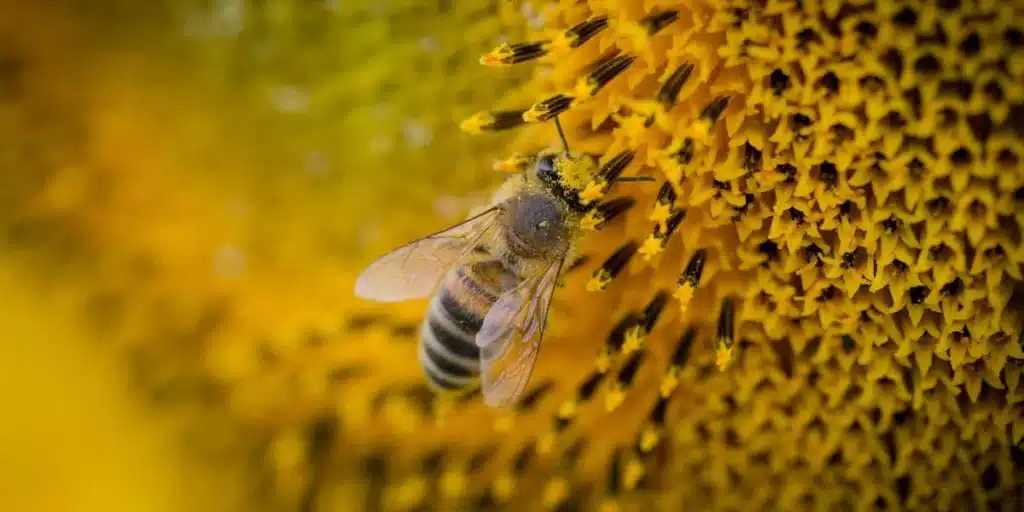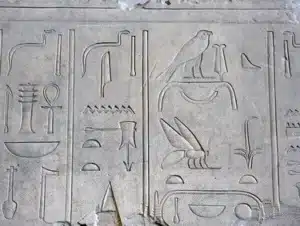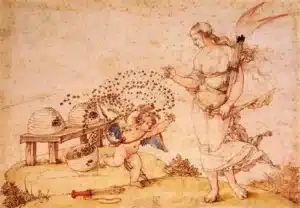The consumption of honey produced by honey bees has been a part of human history for as long as we can remember. Honey has been used not only for nutrition but also for its medicinal and cosmetic properties. Have you ever wondered where the oldest honey was found and how old it is? Let me shed some light on this fascinating subject.
The oldest honey ever discovered hails from Georgia. This remarkable find dates back 5,500 years and was unearthed during archaeological excavations near the capital city of Tbilisi. The honey was found in ceramic jars within the grave of a noblewoman. These jars contained various types of honey, including linden and flower honey. It's intriguing to note that Georgian honey predates the ancient Egyptian honey found by British archaeologist Howard Carter in King Tutankhamun's tomb in 1922 by a whopping 2,000 years.
Honey and Beekeeping in Early Bronze Age Georgia
The excavation of the burial mound took place in August 2004 as part of archaeological activities associated with the construction of the Baku-Tbilisi-Jeikhan oil pipeline. The burial mound is positioned at the base of the Kodiani mountains, in the Borjomi region of Georgia.
According to a study published on Academia.edu, the pots discovered at the Kodiani burial mound in Georgia contained significant amounts of pollen from insect-pollinated plants, indicating the presence of honey.

These pots held various types of high-quality honey, suggesting the existence of a sophisticated beekeeping culture during the Early Bronze Age in Georgia. The presence of cultivated plants and weeds in the honey samples suggests that the honey was produced by domesticated bees.
The findings support the belief in Georgia’s long history of beekeeping, which is documented in written records dating back to the 4th century BCE. The practice of placing honey in graves not only reflects the cultural values of ancient society but also emphasizes the importance attached to beekeeping.
The Historical Significance of Honey-Making and Beekeeping
Beekeeping and the utilization of honey have held significant roles throughout human history. They have been woven into daily life, religious rituals, and the mythology of various civilizations.
Honey in the Prehistoric Era
One can trace the earliest evidence of man’s beekeeping activities to ancient cave paintings. Notably, the depiction found in the Cueva de la Araña (Cave of the Spider) in the Spanish province of Valencia portrays a Prehistoric man collecting honey while surrounded by honeybees.
Many scholars and anthropologists consider this painting as the earliest prehistoric record of beekeeping. Its estimated age falls between 7,000 and 15,000 years.
In addition, archaeologists have discovered Mesolithic cave paintings in India that depict honey collecting. These remarkable drawings, located at the UNESCO World Heritage Rock Art Site of Bhimbetka, were created around 15,000 to 11,000 BC, roughly the same time as the cave painting in Spain.

The Role of Honey and Beekeeping in Antiquity
During ancient times, honey and beekeeping held significant importance in various civilizations.
Egypt
Ancient texts dating back to the 6th dynasty (2750–2475 BCE) contain references to honey. In Egypt, honey served various purposes, including its role as a funerary offering during the 18th dynasty (1580–1350 BCE).
Ancient Egyptians not only baked honey cakes but also incorporated honey into their brewing practices. Honey served not only as a dietary component but also as a recognized medicinal substance applied to wounds due to its antiseptic properties. Furthermore, honey was utilized for cosmetic purposes, as Cleopatra was said to have bathed in a mixture of milk and honey.
The ancient Egyptians were the first to domesticate honey bees, using hollow ceramic cylinders as beehives. Egyptian hieroglyphs and depictions of beehives have been found, including in Thebes within the Tomb of Pabasa. Honey, beeswax, and propolis derived from beekeeping were utilized in the mummification process. Beeswax was also used to create figurines and candles.
Among the treasures found in Tutankhamun’s tomb was a jar of honey, which Howard Carter and his fellow archaeologists supposedly tasted. This three-thousand-year-old find demonstrated that honey when properly stored, can maintain its quality for millennia without deteriorating. However, more ancient honey was discovered in Georgia during an archaeological excavation.

Israel
Beekeeping was also prevalent in ancient Israel, as evidenced by the Old Testament’s description of the land as “a land flowing with milk and honey.” Excavations in the Tel-Rehov Valley revealed sun-dried clay hives dating back to the 10th and 9th centuries BC, capable of housing one million honey bees.
Mesopotamia
The surviving cuneiform texts provide valuable insights into the extensive and versatile pharmaceutical tradition of that era. Among the components used in Babylonian remedies, honey held a significant place. It was combined with various substances, including medicinal plants, mineral substances, alcoholic beverages, fats, milk, oils, and more.
Honey played a crucial role as an ingredient in preparing medicinal treatments, serving as a medium to deliver the therapeutic properties of other components. Notably, the cuneiform tablets reveal that ancient Mesopotamia witnessed the birth of the first antiseptics in human history, such as alcohol, honey, and myrrh.
Hittite Empire
Beekeeping and honey held cultural and economic significance in the Hittite Empire, an ancient civilization that existed in Anatolia (modern-day Turkey) during the Bronze Age.
Hittite records provide evidence of the ownership and management of beehives, highlighting the economic significance of honey production. Furthermore, honey served as a valuable commodity that was traded and exchanged within the empire.
Honey found diverse applications in Hittite society. Culinary uses were widespread, with honey being incorporated into various foods and beverages, including wine, beer, fried meat, and sauces. Ritual and medical texts frequently referenced honey. Bees, regarded as sacred animals in Hittite mythology, further emphasized the cultural significance of honey and beekeeping within the empire.
India
In India, beekeeping practices can be traced back to around 2700 BC. Artificial hives were utilized, and various types of honey were known. Descriptions of beekeeping are found in the 4,000-year-old epic Ramayana, as well as in Indian medical literature and the Vedas.
Archaeological excavations at Harappa have provided evidence that flax seeds mixed with honey were consumed between 3300 and 1300 BC in the Indus Valley civilization. In Hindu mythology, Bhramari was revered as the goddess of bees.
Greece
The ancient Greeks employed honey to preserve fruits and create honey cakes. Hippocrates, often referred to as the father of medicine, considered honey effective in treating various ailments, including fever, pain, wounds, and injuries.
In Greek mythology, honey (nectar) was considered the food of the Olympian gods, while ambrosia or honey wine was their drink of choice. Aphrodite, the Greek goddess of love and beauty, was known as Melissa or the queen of bees. The melissae (honey bees) served as her priestesses.
Aristaeus, the Greek god of beekeeping, imparted knowledge of beekeeping to humankind. The poet Pindar praised honey as the “gift of the Muses,” highlighting its divine sweetness.
Rome
Beekeeping thrived in ancient Rome, resulting in the production of high-quality honey in a wide variety of flavors. The Romans used honey to enhance the taste of foods and beverages, incorporating it into sauces, desserts, and fish dishes. Archaeological excavations have even uncovered ancient Roman honey cake molds made from fired clay along with preserved cakes.
Honey and beeswax played central roles in Roman mythology, such as in the tale of Icarus and Daedalus, who used beeswax to craft their wings. According to some sources, Cupid, the Roman god of love, was stung by a bee while stealing honey, and it was believed that the tips of his arrows were dipped in honey.

China
Honey had diverse applications in ancient China, ranging from flavoring foods and beverages to fruit preservation. The tradition of making honey wine has a long history in Chinese culture.
Honey has been utilized in traditional Chinese medicine and for cosmetic purposes. According to traditional beliefs, honey possesses medicinal properties without harmful effects on the body. People would even use clothes soaked in melted beeswax to treat skin conditions.
The Americas
Beekeeping existed in Mesoamerican cultures even before the arrival of the Spanish, particularly within Aztec and Mayan societies. Honey and beeswax obtained from native stingless bees were used for nutrition, rituals, medicine, and trade.
In the Mayan religion, Ah Mucen Cab was the deity associated with bees, beekeeping, and honey. Depicted with bee wings, he was shown in an ascending or descending position, and his temple can be found in Tulum.
Islamic Tradition
In Islamic medicine, honey played a significant role as a natural remedy and was highly regarded for its healing properties. Honey was used in various ways to promote health and treat ailments. It was commonly used in medicinal preparations, including herbal remedies and compound formulations.
Islamic scholars and physicians, such as Ibn Sina (Avicenna), extensively documented the medicinal uses of honey and incorporated it into their medical texts.
Medieval Europe
Beekeeping continued to thrive during medieval times in Europe, with monasteries becoming important centers for honey production. The beeswax was used to create candles for religious purposes, while honey and beeswax themselves held considerable commercial value.
Honey remained highly prized during the Middle Ages for its sweet flavor and preservative qualities. It was widely used as a natural sweetener in cooking and baking. Honey’s ability to preserve fruits and other perishable ingredients made it invaluable in a time when refrigeration was nonexistent. Additionally, honey was used in brewing beer, as it provided natural sugars for fermentation and added unique flavors to the beverage.
Gingerbread-making began to spread in Europe in the 12th century. It first became popular in Germany and England but soon spread to the Scandinavian countries. The best quality gingerbread was made in Nuremberg by the Lebkuchner Guild, founded in the 1600s.
Viking Culture
Honey played a central role in Norse mythology and the Viking culture. It was produced by the native brown bees that thrived in the cold climate of the Nordic area.
Mead, a fermented alcoholic beverage made from honey, held a special place in Viking traditions. It was considered the drink of the gods, and the gods themselves were believed to obtain their poetic inspiration and wisdom from it. Mead was a cherished beverage at celebratory feasts and was often associated with fertility and abundance.

Honey Production and Beekeeping from the 18th Century to the Present Day
In the 18th and 19th centuries, beekeeping witnessed extensive development as new methods emerged, allowing bees to survive honey extraction. Consequently, large-scale commercial honey production began in Europe and the United States.
During World War I, honey played a crucial role in medical treatment, especially in the field of wound care. Due to its natural antibacterial properties, honey was used as a dressing for wounds to prevent infections and aid in the healing process.
In recent years, honey has experienced a revival in popularity as a natural and healthier alternative to processed sugars. It is widely used as a sweetener in cooking, baking, and beverages. Honey is also appreciated for its unique flavors and is sought after for its distinct floral and regional characteristics. In addition to culinary applications, honey is used in natural remedies, beauty products, and skincare routines.
The Shelf Life of Honey
Honey has an incredibly long shelf life due to its unique properties and composition. Its low water content and high sugar concentration create an inhospitable environment for bacteria and other microorganisms, preventing spoilage.
Additionally, honey’s acidity, low pH level, and the presence of hydrogen peroxide contribute to its antimicrobial properties. The absence of moisture and the sealed nature of honey containers further protect it from external contaminants. These factors combined make honey exceptionally resistant to spoilage, allowing it to have an almost infinite shelf life.
And while we are on the subject of the shelf life of honey, you may wish to read my article on why some food items spoil so fast.
Final Thoughts
The use of honey spans back to the earliest days of humanity. Archaeological discoveries, artwork, and historical records all attest to the significance of honey since prehistoric times. Throughout the ages, honey and other beekeeping products have been utilized for nutrition, healing, cosmetics, and rituals. Honey remains a popular ingredient in cuisines worldwide.
The oldest honey ever found, excavated near Tbilisi, Georgia, demonstrates that, when stored properly, honey can retain its quality for an indefinite period. This is further evidenced by the contents of honey pots that have survived from antiquity.

